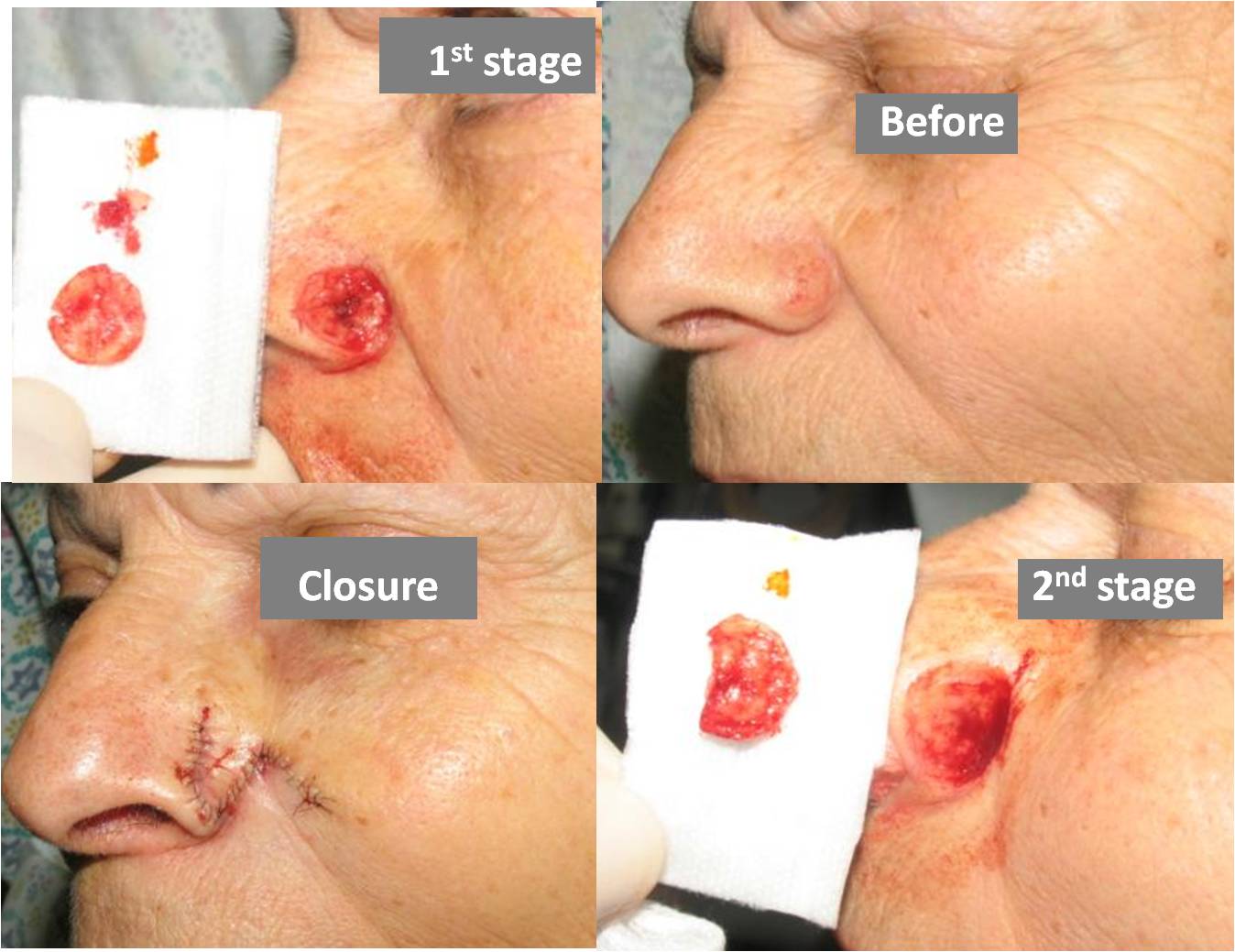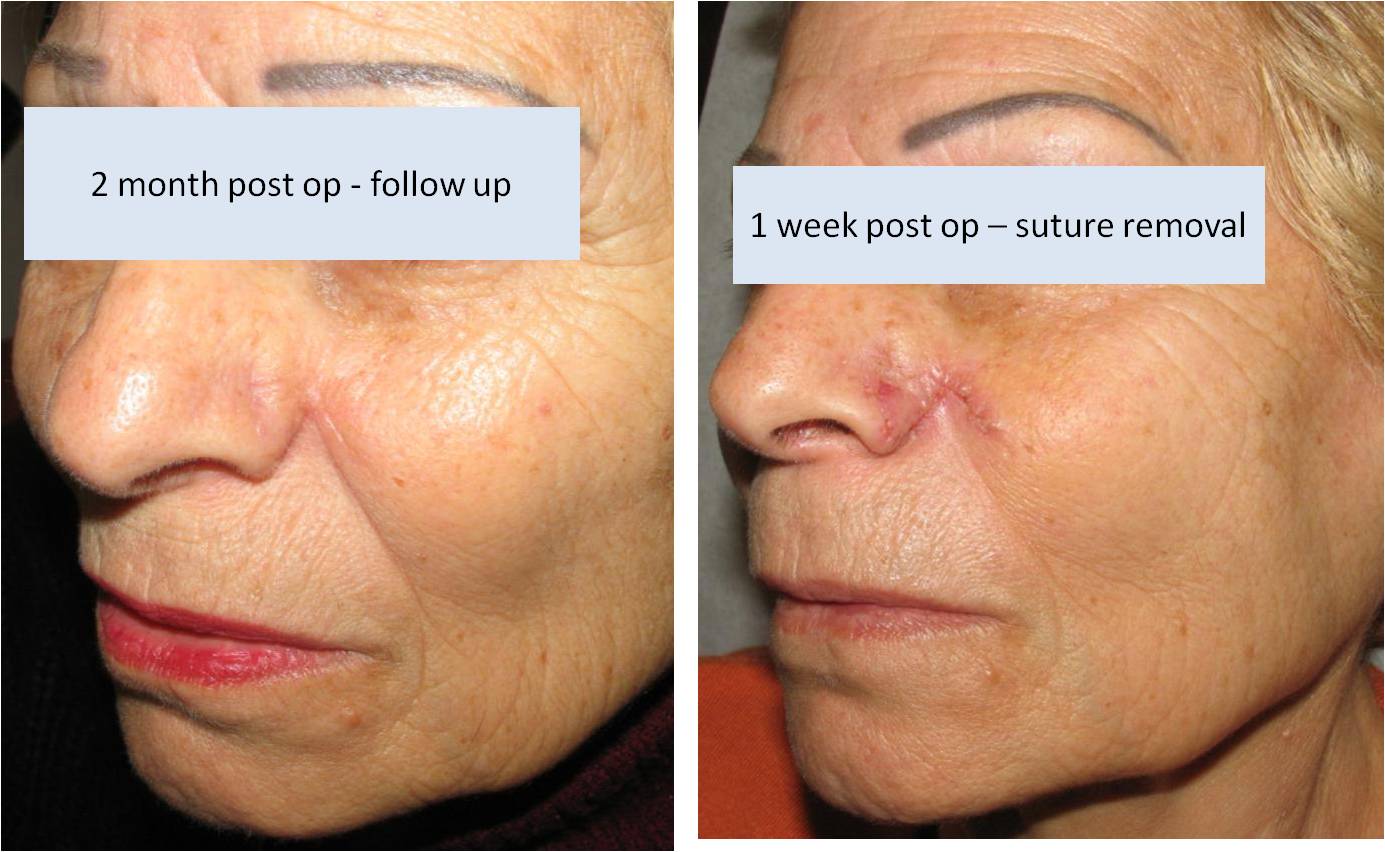Since 2004 I have been involved in surgeries using the Mohs method (MOHS) to remove cancerous skin tumors. As of the beginning of 2024, I have performed over 10,000 nose surgeries and I am considered one of the most senior nose surgeons in Israel
Read MoreDr. Leon Gilead
Certified dermatologist, dermatosurgeon and Mohs surgeon
MOHS surgery
Senior Mohs surgeon, one of the most senior Mohs surgeons in Israel
- Coordinating an appointment for patients applying or being referred for the removal of a skin tumor surgically using the MOHS method will be carried out with maximum priority.
- You must contact the clinic via text message (SMS) or WhatsApp to the phone number 050-5633002.
- You can send a fax or leave a message on the clinic's voicemail 02-5633033
- In principle, appointment coordination is done by SMS or WhatsApp and not by voice calls.
- We will get back to you as soon as possible to schedule a time for a pre-surgery examination.
MOHS surgery is a special and very effective technique for removing skin tumors. The method was developed and first introduced by Dr. Frederick Edward Mohs from the University of Wisconsin in the USA in 1930 and is now used by doctors all over the world. Mohs surgery is special and different from other surgery techniques in that it allows for an immediate and complete microscopic examination of the entire tumor tissue removed, thereby ensuring the complete removal of all the roots and extensions of the tumor. Mohs surgery has the highest success rate of all other existing treatments for skin cancer in removing the tumor and preventing recurrence.
It is not necessary to treat all skin cancers surgically using the MOHS method. This method is reserved for tumors that have returned and appeared after previous treatment/surgery, tumors that by their nature have a particularly high risk of recurrence or tumors that are located in areas where, cosmetically, maximum preservation of healthy skin is required to allow full reconstruction and without causing the formation of severe aesthetic defects following tumor resection. Mohs surgery is in the health basket for tumors in the head and neck area only. The surgery is performed by doctors who have appropriate training in dermatosurgery, general dermatology and histopathology of the skin and who have been trained to perform MOHS surgeries. The surgery is performed in conjunction with a skilled team of nurses and a special laboratory that enables the examination of the tissue.
In the following pictures you can see photographs of the process of removing a tumor using the Mohs method (MOHS), starting with the appearance of the tumor before the operation, the appearance of the wound after the first excision stage (in which there is still a tumor in the wound), the appearance of the wound in the second stage after an additional layer of tissue has been removed according to the microscopic examination of the first stage showing a residual tumor, until the repair of the wound created following the removal of the tumor, by plastic surgery.

Below are photographs of the wound when the stitches were removed, and the later result two months after the operation.

Questions and answers about MOHS surgeries
Mohs surgeries - foreknowledge and understanding reduce anxiety
What is the uniqueness of MOHS surgeries?
מדוע נדרשת בדיקה ע"י המנתח עצמו לפני ניתוח MOHS?
How to prepare for surgery?
What happens on the day of surgery?
Will there be pain involved?
Will there be a scar?
What will the scar look like?
What are the possible complications?
Recommendations
Many opinions = wisdom of the masses
Main areas of practice
Focused areas of interest = professionalism and skill
My main field of practice these days is early diagnosis, treatment and prevention of skin cancer of all types.
Read MoreDermoscopy is the examination of the skin using an optical device called a dermatoscope. As one of the first to practice dermoscopy in Israel (since 1996), I am considered one of the most experienced and senior in the field.
Read MoreEveryone has moles. Sometimes 40 or more. Moles are often thought of as a dark brown spot, but moles have a wide variety of appearances. In the past, a mole in a certain location on a woman's cheek was considered fashionable and therefore called a "grace point".
Read Moreto schedule an appointment.
מסרון (SMS) או ווטסאפ לטלפון 050-5633002 הוא האופציה המהירה והנוחה לתיאום תורים.
בנוסף ניתן למלא הטופס בעמוד זה.
דרכי יצירת קשר עם המרפאה:
- 050-5633002 - הודעות קוליות ומסרוני טקסט בלבד
- 050-5633002 - ווטסאפ
- 02-5633033 - להשארת הודעות קוליות בלבד
- 02-5633033 - למשלוח פקסים
- דואר אלקטרוני (אימייל) למרפאה 5633033@gmail.com
- תורים בתיאום מראש בלבד.
Contact Us
- Emek Rafaim 43B Jerusalem
- Appointments are not scheduled by voice over the phone
- +972-050-5633002 - Voice messages and text messages only
 +972-050-5633002 - WhatsApp messages
+972-050-5633002 - WhatsApp messages- 02-5633033 - Fax messages
- +972-02-5633033 - Voice messages only
- 5633033@gmail.com
- Appointments by appointment only
The fast and convenient option for scheduling appointments is by SMS or WhatsApp to the phone number 050-5633002. You can also schedule an appointment by filling in the details on the "Schedule an Appointment" page


